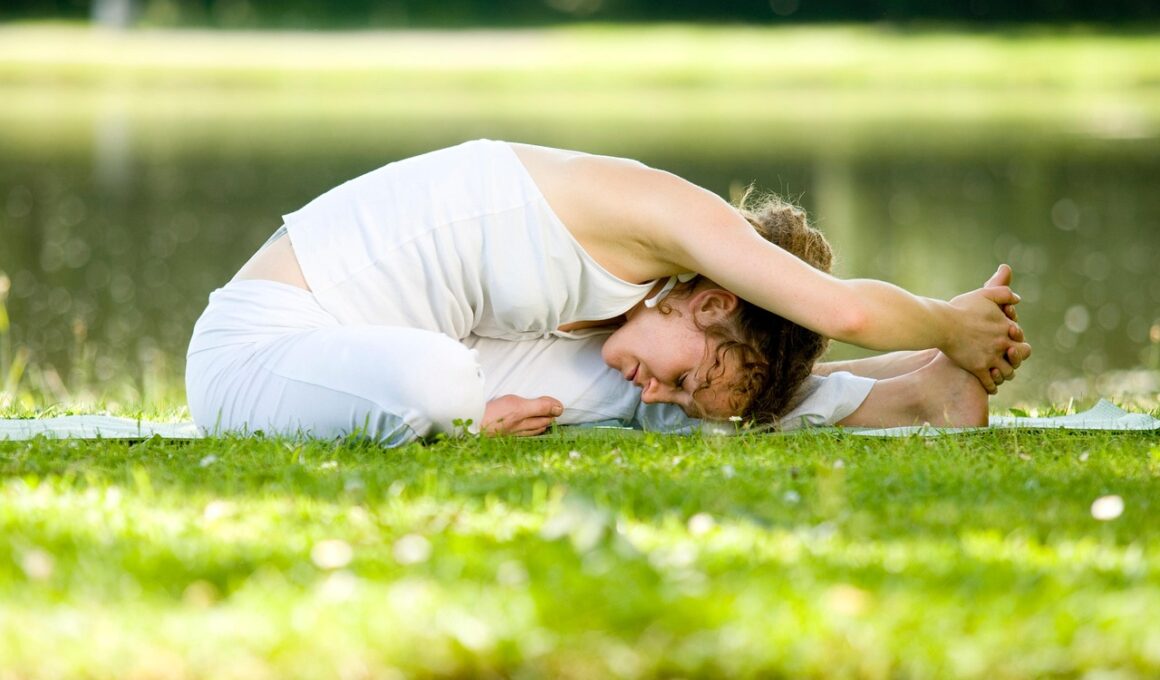Relaxation and Breathing Exercises for Students to Manage School Stress
School can be a demanding environment for students, often leading to stress and anxiety. Stress can hinder learning and impact mental well-being. It’s essential for students to adopt methods to manage stress effectively. Relaxation and breathing exercises are valuable tools that students can incorporate into their daily routines. These exercises not only help in calming the mind but also improve focus, which is crucial during study periods or exams. They can be done anywhere, making them accessible and easy to integrate into busy school schedules. A few minutes of dedicated practice can lead to significant improvement in handling stress. Understanding the importance of mental health in education settings is vital for overall student success. Schools should advocate for these practices as part of a holistic approach to education that encompasses mental well-being. By prioritizing strategies that promote relaxation, students can cultivate a healthier mindset and improve their academic performance. Encouragement from teachers and parents can help in normalizing these practices among students, fostering a supportive environment for mental health. Students should learn to value their mental health alongside their academic endeavors, laying the groundwork for future success.
The Benefits of Breathing Exercises
Breathing exercises are proven techniques that can effectively reduce stress levels. They involve focusing on one’s breath to bring awareness to the present moment, which can help in releasing anxiety. Practicing deep breathing lowers heart rates and calms the nervous system, creating a sense of tranquility. For students facing overwhelming academic pressure, these exercises provide a much-needed break. Techniques like diaphragmatic breathing, box breathing, and alternate nostril breathing can be easily learned and practiced. Implementing these techniques can lead to a more centered approach to challenges faced in school. Students can practice briefly between classes or during free periods, making this method highly practical. Additionally, these exercises can serve as effective tools before exams to alleviate performance anxiety. By fostering a culture where such practices are embraced, schools can help students develop lifelong skills to handle stress. This not only benefits their academic years but also prepares them for future challenges in life. Moreover, studying can become more productive when students practice breathing exercises regularly, leading to improved retention and comprehension of study material. As such, embedding these practices into student life is essential for overall well-being.
Relaxation techniques add to the toolkit students can utilize for managing stress. Students often overlook methods that promote relaxation outside of their academic activities. Techniques such as visualization, progressive muscle relaxation, and mindful meditation can play significant roles in stress reduction. Visualization involves imagining a peaceful scene, which can transport students mentally away from stressors. Progressive muscle relaxation focuses on tensing and then relaxing different muscle groups, which can relieve physical tension held due to stress. Incorporating mindfulness into daily routines can equip students with better coping strategies as they navigate their educational journey. It’s important for schools to introduce these practices in interactive workshops or during health education classes. By providing students with various tools to manage stress, they can determine which methods work best for them individually. Creating spaces within schools for meditation or relaxation can encourage consistent practice. Students should feel comfortable utilizing these resources, and having designated areas can enhance their experience. Creating a routine that integrates relaxation techniques can help normalize mental health awareness and promote a culture of acceptance and understanding among peers.
How to Encourage Regular Practice
Encouraging regular practice of relaxation techniques in educational settings requires dedication from both teachers and students. Establishing a routine that includes these practices can facilitate consistency, ultimately leading to mastery over time. Schools can organize short sessions, during which students can learn various techniques and understand their benefits. Peer-led groups can create a supportive environment for students to share experiences and motivate one another. Integrating relaxation practices into the daily schedule, for instance, during homeroom or at the end of the day, can help reinforce these techniques. Additionally, educational materials can be provided for students, highlighting the methods and their impact on mental health. Teachers can also promote the importance of taking breaks and utilizing relaxation techniques during stressful periods, particularly before exams. Parents can play a significant role by reinforcing these practices at home, creating a balanced approach to stress management among students. One effective strategy is to create reminder systems using apps or calendars to prompt students to practice relaxation. By fostering an ongoing conversation about the importance of mental health, schools can normalize these practices and ensure students feel empowered to prioritize their well-being.
As students embrace relaxation and breathing exercises, they cultivate awareness of their mental health. Through repeated practice, these techniques enhance resilience, helping students respond to stress in healthier ways. Furthermore, peer feedback allows students to share their experiences and learn collectively, increasing their comfort levels with these exercises. Fostering an environment that prioritizes mental health can significantly influence how students perceive stress and their coping mechanisms. Workshops can be held at schools, introducing different relaxation methods, allowing students to explore diverse options. Student-led initiatives may also promote relaxation sessions, enabling students to take charge of their mental well-being. This initiative can empower students to support one another through challenges faced within the academic environment. Schools may also collaborate with mental health professionals to provide expert guidance on integrating relaxation techniques effectively. Promoting mental health awareness helps destigmatize seeking help when needed, encouraging students to utilize the available resources. Additionally, studies can show the correlation between integrating relaxation exercises and improved academic performance, enhancing their credibility. Ultimately, incorporating these practices into the school curriculum represents a progressive approach to education, addressing students’ needs holistically.
The Role of Educators in Stress Management
Educators play a crucial role in facilitating stress management among students. By modeling healthy stress-relief techniques, teachers can inspire students to adopt similar habits. Workshops for teachers focused on mental health awareness can equip them with the necessary tools to support students effectively. Understanding the signs of stress, anxiety, and burnout within students enables educators to initiate timely conversations and interventions. Creating a supportive classroom environment where students feel safe to express their worries is vital. Teachers can incorporate check-in sessions, allowing students to share their feelings and experiences openly. Moreover, emphasizing a balanced approach between academics and relaxation can benefit both educators and their students. By providing opportunities for students to engage in relaxation exercises during classroom time, teachers demonstrate a commitment to their well-being. Encouraging students to take ownership of their mental health helps them develop critical coping strategies for the future. Collaboration with counselors or mental health professionals can provide additional support for both educators and students. Ultimately, fostering a culture centered around mental health promotes better learning experiences and equips students to thrive academically and personally.
In conclusion, relaxation and breathing exercises are essential tools for students aiming to manage school stress effectively. By integrating these techniques into their daily lives, students can enhance their mental health and well-being. Schools can serve as a foundation for promoting mental health awareness, advocating for practices that normalize relaxation exercises and breathing techniques. This holistic approach to education expands beyond traditional academics, nurturing a supportive environment for student development. Encouragement from educators and parents plays a significant role in reinforcing the importance of mental well-being alongside academic success. Furthermore, the skills acquired through practicing relaxation exercises can be beneficial in overcoming future challenges outside of school too. The journey towards maintaining mental health is ongoing, and instilling these practices during formative years can lead to healthier coping strategies in adulthood. Promoting a proactive approach to mental health creates a culture that empowers students to prioritize their well-being throughout their educational journeys. By continuing to explore effective techniques for managing stress, students, educators, and communities can work together towards a healthier future. It’s vital to recognize the importance of mental wellness in shaping a positive educational experience for all students.
As awareness of the importance of mental health grows, schools have begun implementing supportive measures to cater to student well-being. Educational institutions are now actively addressing the need for relaxation techniques in their curriculum. This shift recognizes that students’ mental health directly influences their ability to learn and succeed in academic settings. Programs involving relaxation and breathing exercises have shown promising results in helping students manage stress. Schools implementing these programs report improvements in student focus, emotional regulation, and overall academic performance. It’s essential for educators to understand the potential impact of stress on students’ lives and academic achievements. Moreover, with the rise of standardized testing and increased academic pressure, these techniques provide tangible relief. Students who practice relaxation regularly often display better emotional resilience. Initiatives such as school-wide wellness days or mental health workshops can enhance this focus on wellness. It’s crucial for local communities, parents, and stakeholders to support these efforts, ensuring that mental health resources are available to all students. Collaborative approaches to implementing breathing and relaxation exercises can result in lasting positive outcomes for schools and students alike.


